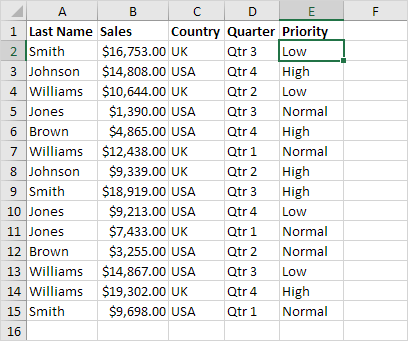5 Ways to Finalize Your Excel Sheet Quickly

Whether you're a financial analyst, data scientist, or just someone who frequently works with data, mastering Microsoft Excel can significantly boost your productivity. However, finalizing an Excel sheet can sometimes be a daunting task, especially when dealing with complex datasets. In this comprehensive guide, we'll explore five essential techniques to quickly finalize your Excel sheet, ensuring your data is clean, consistent, and ready for analysis or presentation.
1. Use Auto-Filter for Data Management

One of the quickest ways to finalize your Excel sheet is by utilizing Excel’s Auto-Filter feature. This tool allows you to easily sort, filter, and organize your data, which is crucial for:
- Removing duplicates: Right-click on the header, select ‘Filter’, and then choose ‘Filter for Unique Values’ to remove any duplicate entries.
- Sorting data: Sort your data by any column to see trends or organize information for better readability.
- Conditional formatting: Set rules to highlight outliers, errors, or specific conditions in your dataset, making it easier to spot and fix issues.
Important Notes:

📌 Note: Remember to clear filters after your analysis to avoid missing out on data during your finalization process.
2. Implement Advanced Sorting and Subtotals

Advanced sorting in Excel can go beyond simple alphabetic or numeric sorting. Here’s how it helps in finalizing:
- Multi-level sorting: Sort your data based on multiple criteria, for example, first by department, then by employee name.
- Subtotals: Use the Subtotal feature to calculate sums, averages, or counts for grouped data. This feature can:
- Automatically group and calculate summary statistics for different sections of your data.
- Provide an immediate overview of grouped data, which can be expanded or collapsed for detailed analysis.
Important Notes:

⚠️ Note: Ensure your data range is correctly selected before applying subtotals, as incorrect ranges can lead to incorrect calculations.
3. Utilize Excel’s Power Tools

Excel offers powerful tools like Power Query, Power Pivot, and Power View:
- Power Query: Connect, combine, and refine data from various sources, transforming your raw data into a structured dataset ready for analysis.
- Power Pivot: Create and manage large-scale data models, use advanced data analysis expressions (DAX) to perform complex calculations.
- Power View: Quickly generate interactive charts, graphs, and other visual representations of your data, which can be particularly useful for presentations.
Using these tools can significantly reduce the time spent on manual data manipulation, making the finalization process much more efficient.
4. Data Validation for Integrity

Maintaining data integrity is crucial when finalizing an Excel sheet:
- Data Validation: Apply rules to ensure data entered into your Excel sheet meets specific criteria, preventing errors like:
- Inputting text into numeric fields.
- Entering dates that fall outside an acceptable range.
- Dropdown Lists: Create dropdown menus to restrict entries to predefined options, ensuring consistency across your dataset.
This not only prevents errors during data entry but also makes future data analysis more reliable.
5. Macro Automation

Macros can automate repetitive tasks in Excel:
- Create Macros: Record or write macros to automate tasks like formatting, sorting, or applying specific formulas across sheets or workbooks.
- Benefits:
- Speed: Automate time-consuming tasks to save hours of manual work.
- Consistency: Ensure that formatting or formula application is consistent across different sheets or reports.
Important Notes:

💡 Note: Be cautious with macros as they can pose security risks if not from a trusted source. Always enable macro security settings.
In summary, finalizing an Excel sheet involves a combination of smart data management, leveraging Excel's powerful features, ensuring data integrity, and automating repetitive tasks. By employing techniques like auto-filter, advanced sorting, power tools, data validation, and macro automation, you can transform your Excel sheets from raw data into polished, professional, and analysis-ready spreadsheets. This not only enhances your productivity but also ensures the accuracy and consistency of your data, making subsequent analysis or presentations more effective.
Can I use these techniques in older versions of Excel?

+
Yes, many of these techniques can be applied in older versions of Excel, though some features like Power Query might not be available. Basic sorting, filtering, and macro creation are supported in most versions.
How do I protect sensitive data when using macros?

+
Enable macro security settings in Excel to control which macros can run. Never run macros from untrusted sources, and always verify macros with digital signatures.
What should I do if my data exceeds Excel’s limits?

+
Consider using database systems like SQL Server or cloud-based solutions like Google Sheets for large datasets. Excel can still be used for smaller subsets or reporting purposes.